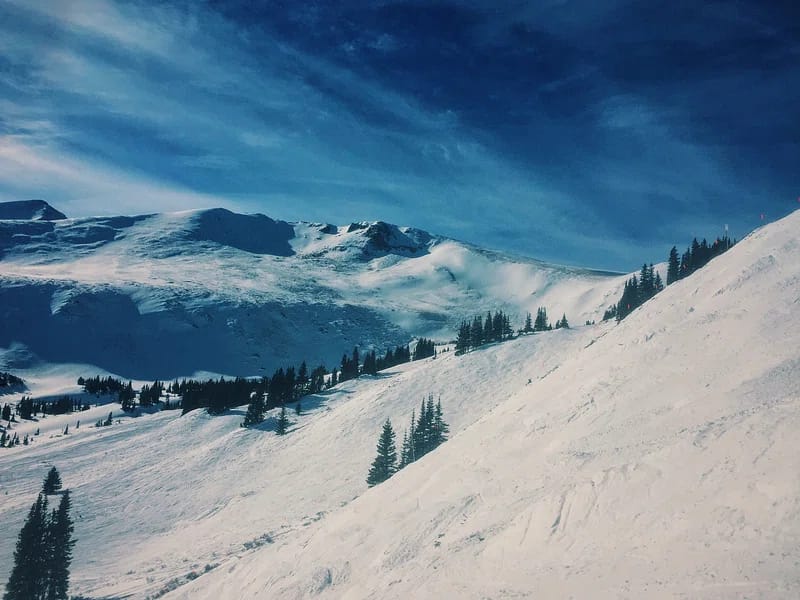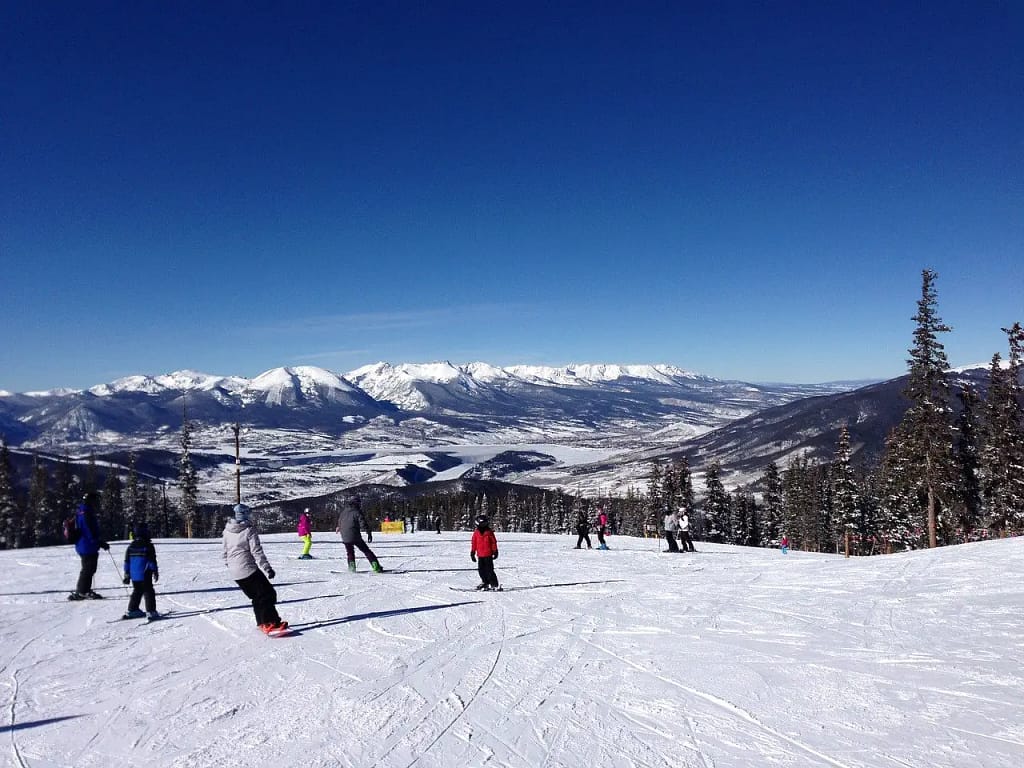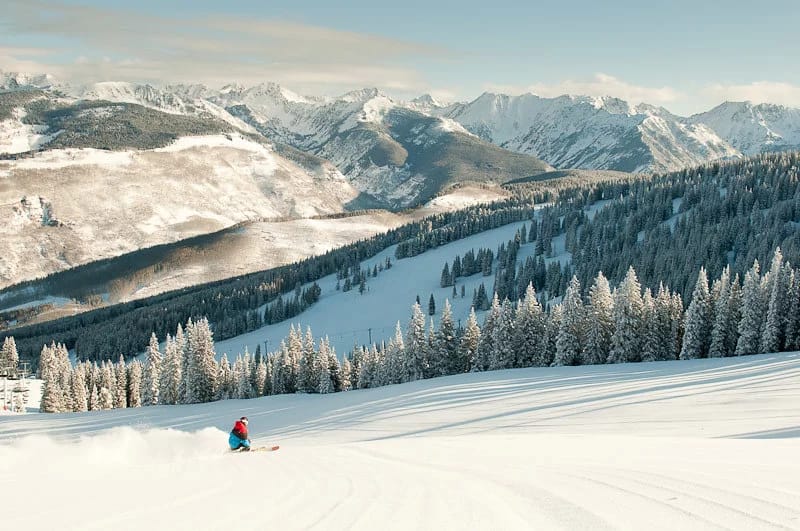Table of Contents
Introduction to Skiing in Colorado
Welcome to the enchanting world of Colorado skiing—a winter wonderland that beckons adventurers and leisure seekers alike. With its powdery slopes and majestic mountains, Colorado stands as a beacon for ski enthusiasts around the globe. Why, you ask? Well, it’s simple: the allure of carving through pristine snow under a cobalt sky is irresistible. The state’s passion for skiing isn’t just a pastime; it’s a way of life that has thrived for generations, making it a pivotal part of the local culture and economy.
The History of Ski Resorts in Colorado
When you think of Colorado, you might envision the majestic Rocky Mountains and the pristine powder that blankets them every winter. It’s a snow-lover’s paradise, and for good reason: Colorado’s ski resorts are steeped in a rich history that has shaped the state into a world-renowned winter sports destination. But how did these alpine havens come to be? Let’s glide through time to uncover the origins and transformations of these snowy sanctuaries.
The First Ski Resorts
Imagine a time when the slopes were untouched, and skiing was a mode of transportation rather than recreation. That’s where our journey begins. Colorado’s first ski resorts emerged from humble beginnings, with Howelsen Hill in Steamboat Springs setting the stage in 1915. It wasn’t just a place to ski; it was a training ground for Olympians, a testament to the passion and dedication that would define Colorado’s ski culture. This pioneering spirit caught on like wildfire, and resorts like Aspen and Winter Park quickly followed suit, transforming the landscape and setting the standard for ski areas nationwide.
Evolution of Ski Resorts
From the first towropes to the high-speed chairlifts of today, Colorado’s ski resorts have undergone a metamorphosis that continues to attract skiers and snowboarders from all corners of the globe. The evolution has been driven by innovation—think snowmaking and grooming technologies that ensure the perfect run every time. Resorts expanded, villages grew, and the après-ski scene blossomed, offering an experience that goes beyond the thrill of the descent. It’s a blend of tradition and progression that honors the past while carving out new paths for future generations to explore.
How Many Ski Resorts in Colorado
Now, you might be asking, “How many ski resorts are there in Colorado?” The answer is as thrilling as a downhill slalom – Colorado is home to an impressive 30 ski resorts, each offering its own unique blend of powdery slopes, breathtaking scenery, and après-ski charm. Let’s take a brief glide through these winter wonderlands.
| Name | Location | Trails | Lifts | Skiable Acres |
| Vail Ski resort | Vail | 193 | 31 | 5,317 |
| Snowmass Mountain | Snowmass Village | 91 | 21 | 3,132 |
| Winter Park Ski Resort | Winter Park | 143 | 25 | 3,081 |
| Steamboat Ski Resort | Steamboat Springs | 165 | 18 | 2,965 |
| Breckenridge Ski Resort | Breckenridge | 187 | 34 | 2,908 |
| Copper Mountain | Frisco | 140 | 23 | 2,490 |
| Telluride Ski Resort | Telluride | 125 | 18 | 2,000 |
| Beaver Creek Ski Resort | Avon | 150 | 23 | 1,832 |
| Loveland Ski Area | Georgetown | 94 | 10 | 1,800 |
| Wolf Creek Ski Area | Pagosa Springs | 77 | 8 | 1,600 |
From the legendary back bowls of Vail to the family-friendly slopes of Keystone, every resort boasts its own story. These havens of snow and ice cater to a diverse range of winter sports enthusiasts, from the novice taking their first tentative slide to the seasoned pro carving up the black diamond runs.
Did you know that the ski industry contributes a staggering $4.8 billion annually to the Colorado economy? That’s a mountain of economic impact! It’s not just about the thrilling descents; it’s about the livelihoods supported, the communities enriched, and the traditions preserved.
In the grand scheme of things, Colorado’s ski resorts are more than just numbers. They are the heartbeats of winter tourism and the bastions of alpine adventure. So, whether you’re planning your next ski trip or just dreaming of fresh powder, remember that Colorado’s slopes are calling.

Famous Ski Resorts in Colorado
When you whisper the word ‘Colorado,’ it’s as if the snow-capped peaks themselves beckon skiers from every corner of the globe. Colorado’s ski resorts are not just plentiful; they are legendary. But which among them have risen to fame, etching their names into the hearts of winter sports enthusiasts?
The Crème de la Crème: Vail Ski Resort
Let’s carve into the details, shall we? Vail Ski Resort is not just a name; it’s a beacon of skiing excellence. Boasting over 5,200 acres of skiable terrain, it’s the largest ski resort in the state and one of the most frequented in North America. Vail’s Back Bowls are the stuff of legend, offering an expanse of powder that could make any skier’s heart skip a beat. The resort’s charm lies not only in its vastness but also in its ability to cater to all levels of skiers, from the bunny slopes to the adrenaline-pumping Black Diamonds.
Aspen: A Synonym for Skiing Luxury
Aspen, the name itself conjures images of celebrities donning designer goggles. But beyond the glitz, Aspen’s four ski areas – Aspen Mountain, Aspen Highlands, Buttermilk, and Snowmass – provide a diverse range of trails and terrains that cater to both the ski elite and families looking for a friendly day on the slopes. Did you know that Snowmass alone has more than 3,000 acres of terrain and 150 miles of trails? That’s a statistic that turns heads and skis!
Steamboat Springs: Where Champagne Powder Reigns Supreme
Ever heard of ‘Champagne Powder’? Well, Steamboat Springs is where this fluffy, dry snow became a term of endearment for powder hounds. With an annual snowfall of around 336 inches, Steamboat offers a winter wonderland that seems to be brushed by the hand of Old Man Winter himself. The resort’s 169 trails spread across nearly 3,000 acres, ensuring that visitors can find their own slice of snowy paradise.
Telluride: Majestic Views Meet Exhilarating Runs
Telluride is where the San Juan Mountains put on a show, with scenery that could steal your breath faster than a downhill run. This resort’s beauty is matched by its 2,000 acres of skiable terrain, providing a mix of beginner-friendly areas and heart-racing drops for the thrill-seekers. Telluride’s commitment to maintaining its old-world charm while providing modern amenities makes it a must-visit for any ski aficionado.

The Impact of Ski Resorts on Colorado’s Economy
Have you ever wondered how those picturesque slopes and adrenaline-packed ski runs translate into dollars and cents for Colorado? Ski resorts are not just playgrounds for winter sports enthusiasts; they are also economic powerhouses that contribute significantly to the state’s prosperity.
The Economic Contribution of Ski Resorts
Let’s dive into the numbers, shall we? Colorado’s ski resorts are a major draw for tourists, with millions of visitors flocking to the state each year to experience the pristine snow and challenging terrain. This influx of visitors means big business. In fact, the ski industry contributes an estimated $4.8 billion annually to the Colorado economy, according to a recent report. But that’s not all; these resorts also support approximately 46,000 jobs—jobs that span from direct employment within the resorts to indirect roles in surrounding communities.
Tourism and Local Businesses
Think about the ripple effect for a moment. When skiers and snowboarders descend upon Colorado, they also need places to eat, sleep, and shop. Local businesses, including hotels, restaurants, and retail stores, thrive during the ski season. The resorts themselves are like small cities, requiring a vast array of services to operate smoothly. This means opportunities for small businesses and entrepreneurs to provide everything from equipment rentals to après-ski entertainment.
Tax Revenue and Infrastructure
And let’s not forget the tax revenue. Ski resorts generate substantial sales tax from all the transactions that occur on and off the slopes. This revenue is crucial for funding public services and infrastructure projects, not just in the resort areas but across the state. It’s a win-win situation: the better the ski resorts perform, the more the state can invest in roads, schools, and healthcare services.
A Look at the Numbers
To put this into perspective, here’s a table illustrating the economic impact of ski resorts in Colorado:
| Aspect | Impact |
|---|---|
| Annual Economic Contribution | $4.8 Billion |
| Jobs Supported | 46,000 |
| Tax Revenue Generated | Data Pending |
| Visitor Spendings | Data Pending |
Future of Ski Resorts in Colorado
As we carve through the powdery slopes of speculation, one can’t help but wonder: what does the future hold for ski resorts in Colorado? With climate change nipping at our skis and technology racing down the mountain faster than a seasoned pro, the ski industry in Colorado faces a thrilling yet challenging ride ahead.
In the face of warmer winters and unpredictable snowfall, Colorado’s ski resorts are getting creative. Snowmaking advancements are on the rise, ensuring that even Mother Nature’s hesitation won’t dampen our winter escapades. But it’s not just about combating climate change; it’s about embracing sustainability. Resorts are increasingly harnessing renewable energy sources, aiming to reduce their carbon footprint and preserve the pristine alpine environment we all cherish.
Technological innovation is also reshaping the skier experience. From RFID lift tickets to AI-powered personal ski assistants, the digital transformation is making the slopes smarter and more accessible. Imagine a future where augmented reality enhances your ski school lessons, or where an app provides real-time updates on trail conditions. It’s not just a fantasy; it’s the impending reality of Colorado’s ski resorts.
Yet, with all these advancements, the core of skiing—a connection with nature, the thrill of the descent, the camaraderie among snow enthusiasts—remains unaltered. Colorado’s ski resorts are poised to balance innovation with tradition, ensuring that future generations can continue to shout with joy as they zigzag through the Rockies.

Conclusion
As we glide gracefully to a halt on our exploration of Colorado’s ski resorts, it’s clear that these winter wonderlands are more than just a backdrop for thrilling downhill adventures. They are a pivotal part of the state’s identity, its economy, and its future. From the powdery peaks that first drew in the pioneers of the sport to the bustling hubs of activity they are today, ski resorts in Colorado have carved out a place in the hearts of snow enthusiasts around the world.
Indeed, Colorado’s ski resorts are not just destinations; they are the lifeblood of winter tourism and local economies. They foster a sense of community among skiers and snowboarders, from novices to experts, and continue to evolve with the times, ensuring every visit is etched with the promise of new memories.
In the grand tapestry of Colorado’s history, the ski resorts stand out as vibrant threads, weaving together tales of adventure, perseverance, and innovation. As the snowflakes settle and the sun casts a golden hue over the mountains, we’re reminded that these places offer more than just sport—they offer a chance to connect with nature, with others, and with ourselves.
So, whether you’re carving out the first tracks at dawn or enjoying a fireside cocoa as dusk falls, remember that the story of Colorado’s ski resorts is still being written. And you, dear reader, are part of that narrative. Until the next snowfall, keep the spirit of the slopes alive in your heart, and let the anticipation of fresh powder fuel your dreams.
FAQ Section
1. How many ski resorts are there in Colorado?
Colorado is home to around 30 ski resorts, ranging from world-renowned destinations to hidden local gems. Whether you’re a beginner looking to find your footing or an expert chasing the thrill of black diamond runs, there’s a slope for everyone. It’s always a good idea to check the latest listings, as the number can fluctuate with new developments or closures.
2. What was the first ski resort established in Colorado?
The honor of the first ski resort in Colorado goes to Howelsen Hill, located in Steamboat Springs. It opened way back in 1915 and is known as one of the oldest continuously operated ski areas in North America. It’s a piece of skiing history and definitely worth a visit, even if it’s just to say you’ve skied on the same slopes as some of the earliest enthusiasts of the sport!
3. What are some of the most famous ski resorts in Colorado?
Colorado’s fame in the skiing world is thanks to places like Aspen, Vail, and Breckenridge. Aspen is known for its luxury and celebrity sightings, Vail for its vast terrain and European-style village, and Breckenridge for its historic charm and family-friendly atmosphere. But don’t forget resorts like Telluride and Beaver Creek, which offer their own unique experiences. Each resort has its own personality, so think about what you’re looking for in a ski trip before you choose!
4. How do ski resorts impact Colorado’s economy?
Ski resorts are a major driver of Colorado’s economy, attracting tourists from all over the world. This tourism translates into jobs, not just on the slopes but in hospitality, retail, and transportation. Ski resorts also contribute to the state’s tax revenue, which supports local infrastructure. It’s a ripple effect: the better the ski season, the more everyone from local businesses to the state government benefits.
5. What is the future of ski resorts in Colorado?
The future of ski resorts in Colorado is a hot topic, especially with concerns like climate change. Resorts are investing in sustainable practices and advanced snowmaking technology to ensure they can continue offering top-notch experiences. There’s also a trend towards year-round activities to attract visitors even when the snow melts. So don’t worry, skiing in Colorado is here to stay, and it’s constantly evolving to be better and more environmentally friendly.





No responses yet